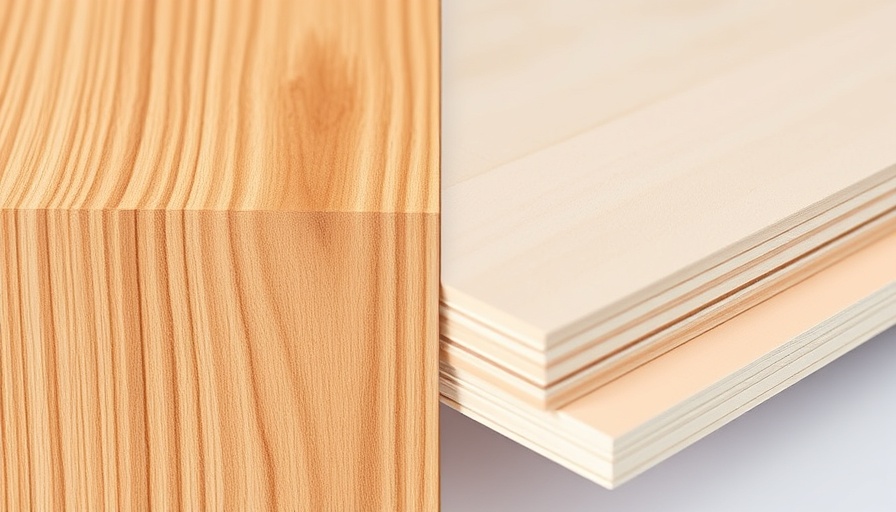
An Essential Choice: The Rise of Engineered Wood
In the evolving landscape of construction materials, both engineered wood and plywood stand out, each with unique benefits. However, recent trends indicate a growing preference for engineered wood among DIY enthusiasts and professionals alike. This shift highlights not only the advancements in technology but also evolving consumer preferences regarding aesthetics, sustainability, and application versatility.
Understanding the Basics: Engineered Wood vs Plywood
Before making a crucial decision for your project, it’s important to grasp the foundational differences between engineered wood and plywood. Plywood is created by bonding thin layers of wood veneer, known for its strength and structural integrity. Each layer is oriented in a cross-grain pattern, contributing to its impressive durability and resistance to breaks. On the other hand, engineered wood includes various composite materials like Medium-Density Fiberboard (MDF) and Particle Board, which utilize processes that bind wood fibers and particles together.
Performance Metrics: Strength and Durability
When it comes to strength and durability, the performance of each material plays a pivotal role in its application. Plywood typically surpasses engineered wood in bending strength and impact resistance. This makes it particularly suitable for structural elements that need to withstand stress, such as flooring and furniture. Higher grades, like Marine Plywood, offer waterproofing features that further enhance its usability in humid environments. In contrast, engineered wood's isotropic properties allow it to maintain consistent strength across the board but may falter under extreme loads.
Moisture Resistance: Understanding the Risks
Moisture resistance is a critical factor in material selection. Plywood, especially higher-grade variants, boasts impressive moisture resistance due to its layered construction and specialized adhesives. Engineered wood, particularly MDF and Particle Board, may not resist water damage as robustly, making them less ideal for high-moisture areas unless treated with surface seals. Consider the environment of your project—basements, kitchens, and bathrooms will benefit from plywood’s superior moisture resistance.
Applications: Where to Use Each Material
The context of use often dictates the best material choice. For construction projects, plywood is preferred for exterior applications—roofing, siding, and subflooring—due to its strength in demanding conditions. Engineered wood shines in applications requiring a smooth finish for cabinetry or paneling, where aesthetics are paramount. Understanding their ideal uses can save time, effort, and money in the long run.
Making an Informed Decision
The decision between engineered wood and plywood boils down to your project’s specific needs. Consider factors like load requirements, moisture exposure, and desired appearance. Armed with this understanding, you can confidently select the appropriate material to ensure both durability and functionality in your project.
 Add Row
Add Row  Add
Add 




Write A Comment